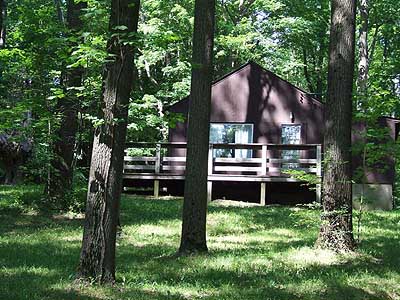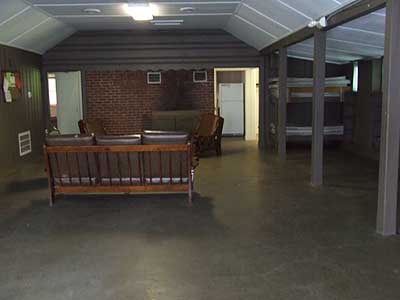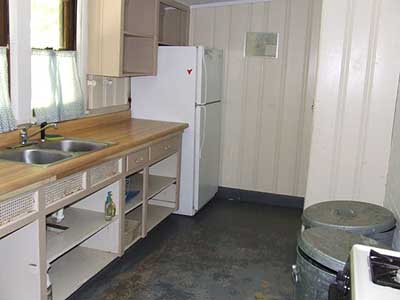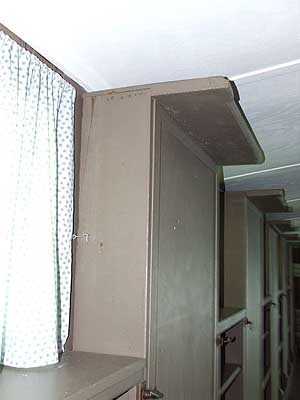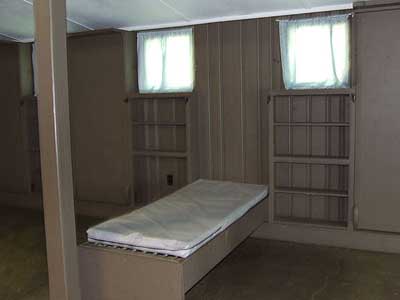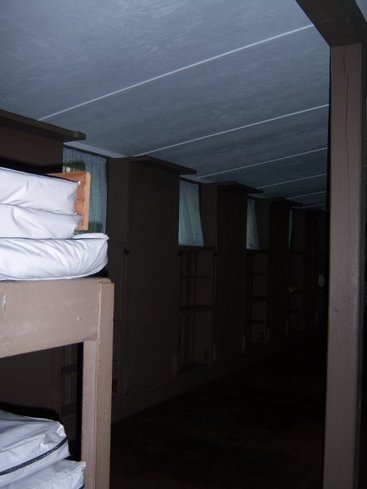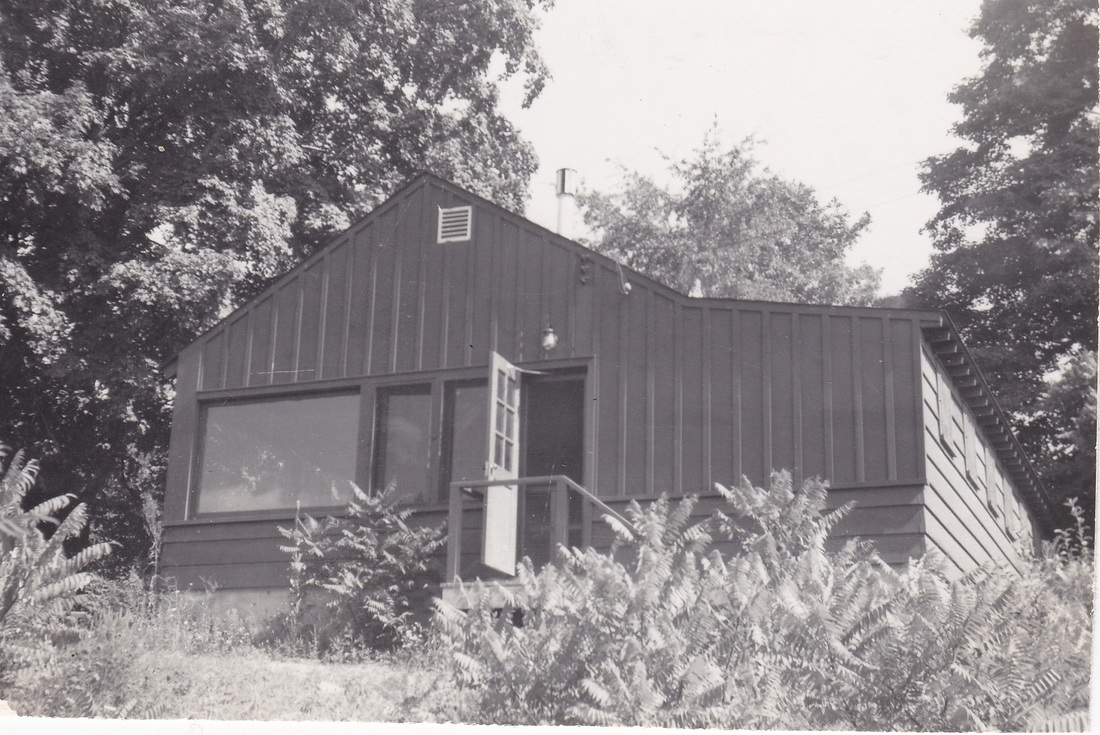Hilltop House
Hilltop House is a single great room which includes Murphy beds which fold down from wall panels, as well as two sets of bunk beds. The kitchen is small, but serviceable. The cabin has both an indoor toilet and a latrine. The view from the front porch in the fall is breathtaking.
Background
Hilltop was built in 1949; the first winterized cabin cabin that the Cleveland Girl Scout council built at Camp Julia Crowell. In 1972, it served as "home base" for twenty Japanese Girl Scout leaders learning about "American-style" camping.
Lessons from Diverse Cultures
………….1972 ………….
A Japanese student at one of the Cleveland colleges had served as a councilor at Camp Julia Crowell while she was at school in the area. She had gone back to Japan and obtained a position with the Kyoto Girl Scouts. Although she tried to describe what camping was like in the USA, the Japanese wanted to see for themselves. Forty women, ages 16-60, came to visit the council. Twenty were housed at Hilltop House [in Camp Julia Crowell], and twenty were in hostess homes. …..They taught Japanese ceremonies and dances. In return, they learned program and management for Girl Scout Camps. As a service project, they planted a Japanese garden at Camp Julia Crowell. It is identified with a bronze plaque. With the American money they had at the end of the tour, they bought three Japanese maple trees that are also planted in the garden. (From page 89, Lake Erie Girl Scout Council.......the First 75 Years A Council History 1912 -1987, compiled by the history committee, narrative by Geogianna Bonds)
The name "Hilltop House" is reminiscent of the home of Beatrix Potter - also named Hilltop House - in the Lake District of England. Before Beatrix wrote the children's stories which made her famous, she was an amateur scientist. She studied the natural habitats of her environment. Her detailed notes were often accompanied by very accurate pencil sketches or watercolors. Her primary field of study were fungi and lichens. She was the first person in England to recognize that lichens were symbiotic liaisons between algae and fungi. But women were not permitted to attend the Linnean Society of scientific study Instead, her uncle presented the paper she had written. Her ideas were not accepted, but they are now known to be correct.
(Sources: http://www.nytimes.com/books/first/w/wakeford-liasons.html,
At Home with Beatrix Potter by Susan Denyer Frances, Lincoln ltd., 2000)

